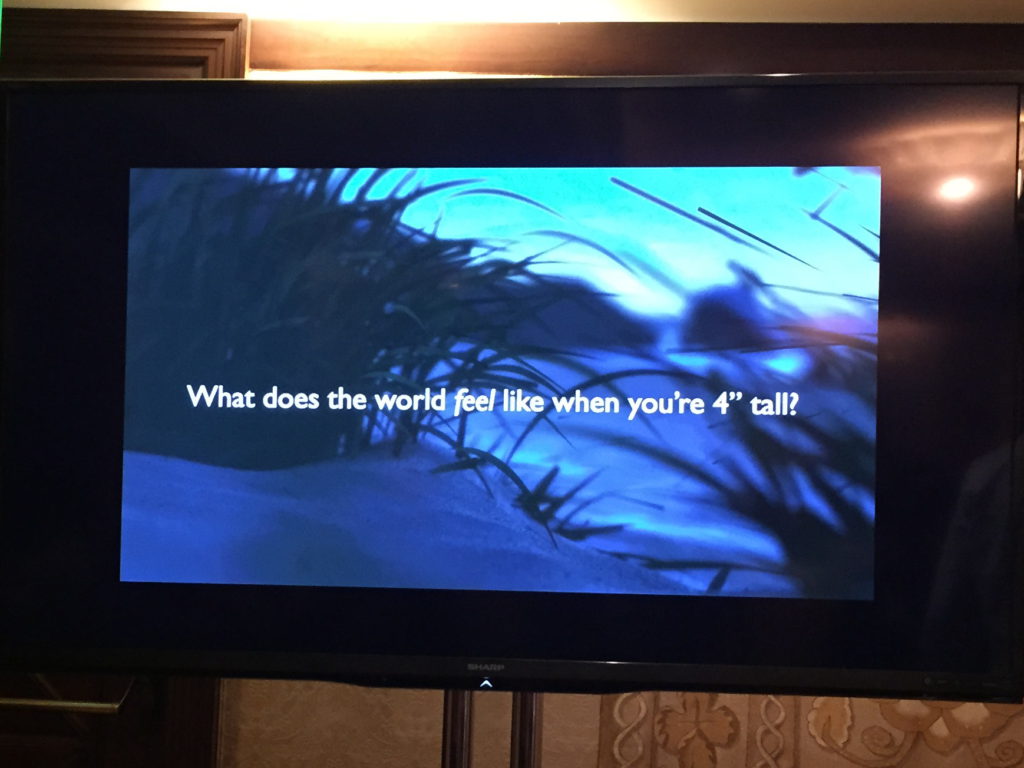A Look at Pixar’s Newest Short, Piper
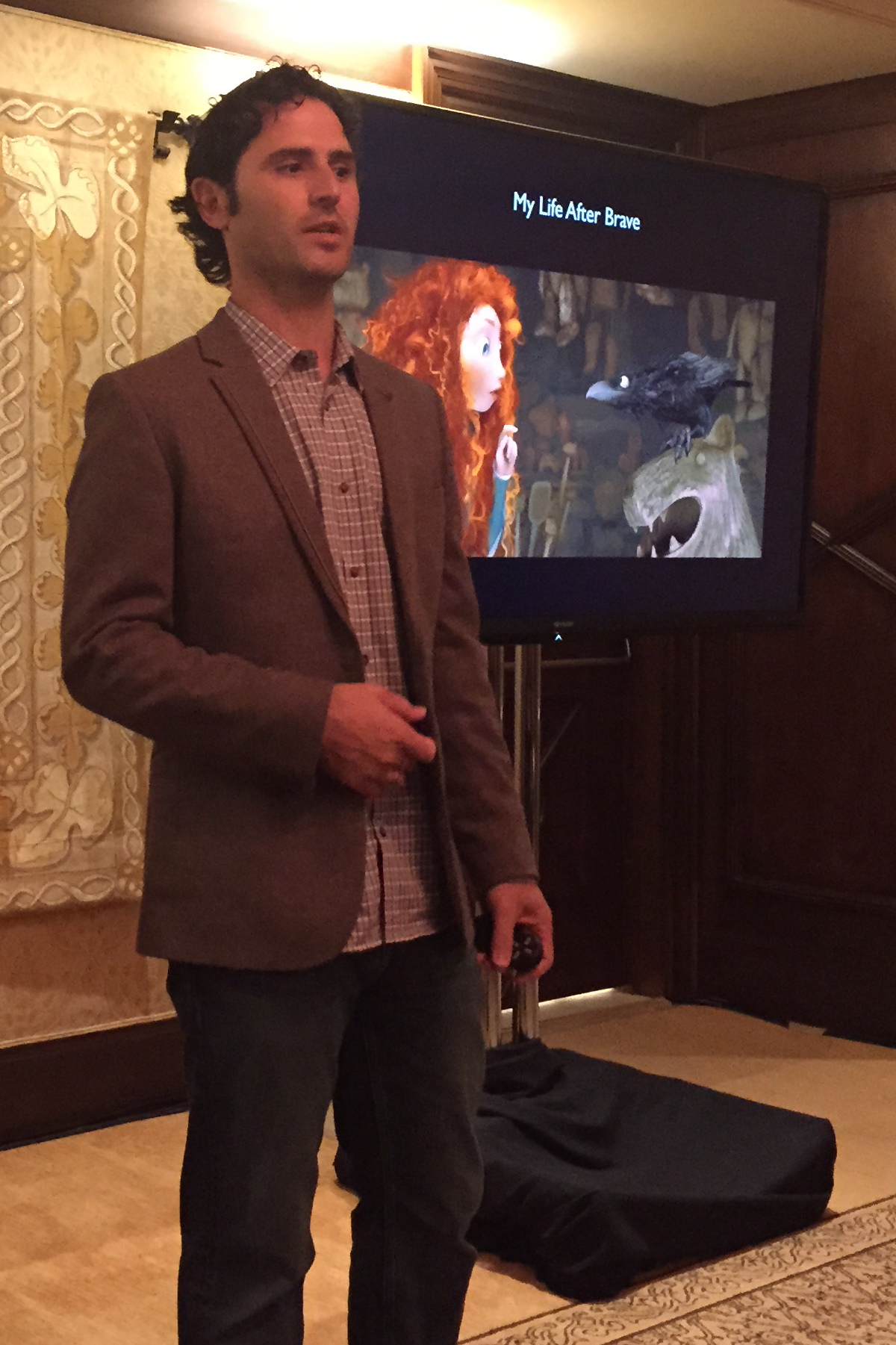
Piper Director Alan Barillaro
Piper, the animated short feature that accompanies Finding Dory is set on the seashore, among a flock of sanderlings, and features a very young bird who learns some important life lessons. The highly realistic animation carries the simple plot with humor and great attention to character.
Director Alan Barillaro and Producer Marc Sondheimer recently shared the process they followed in creating Piper. Barillaro has been a Pixar animator since 1997; this is his directing debut. He wisely chose a subject close to home. The inspiration for Piper came to him during his daily run on the beach, watching the little seabirds who scamper back and forth, chasing the waves as they dig for shellfish.
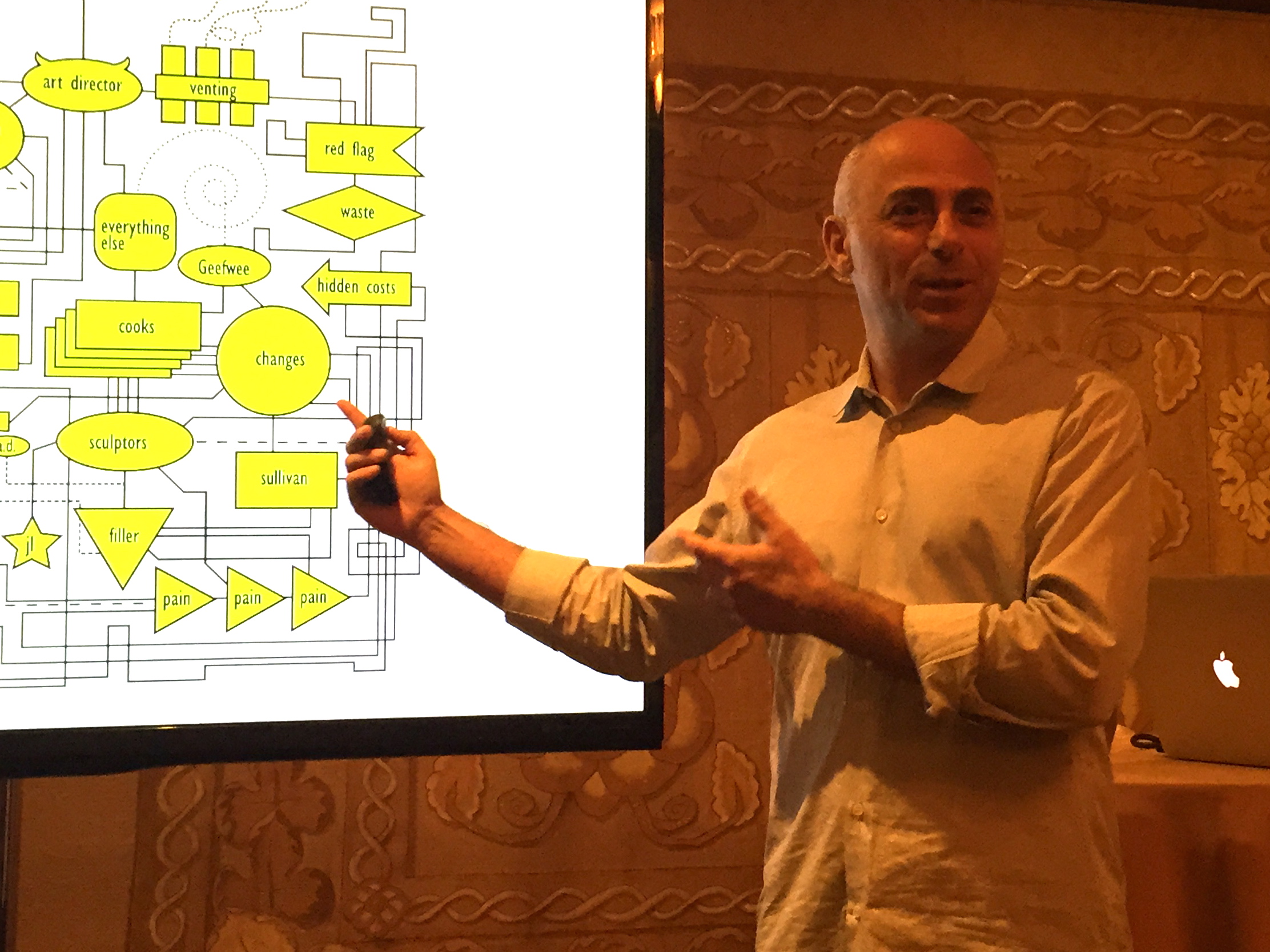
Piper Producer Marc Sondheimer
An animator tends to view the world as a catalog full of characters. After animating some of the sanderlings he’d seen on the beach, he showed it to director Andrew Stanton. Thinking of it as a character test, he was pleased when Stanton suggested the material could be developed into a story. At Pixar, Barillaro said, story is everything.
In thinking through the possibilities, he arrived at the notion of a little bird who is afraid of the water. As a first time director, the theme of conquering your fears made it a personal story, one from the heart.
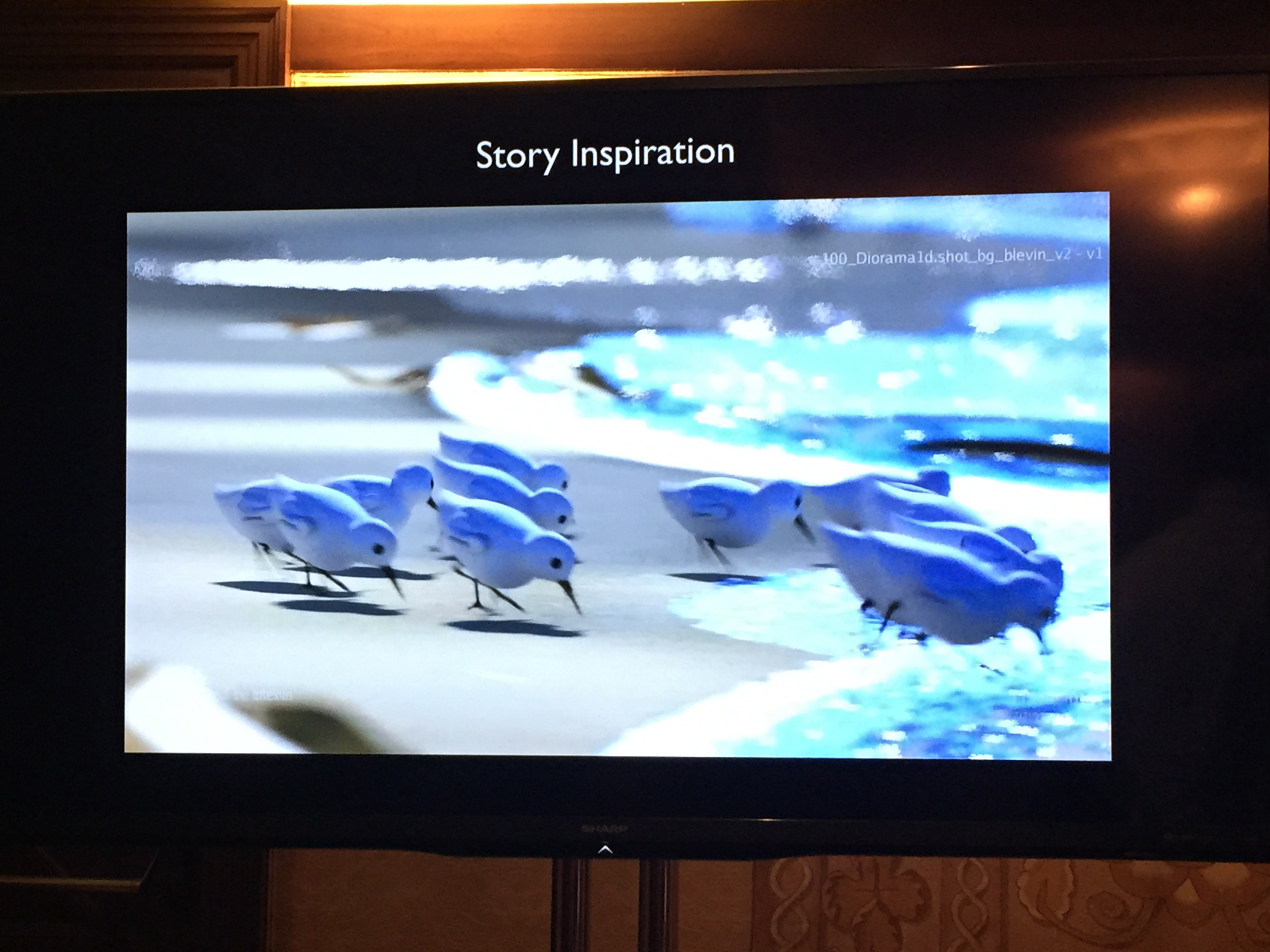
Characters inspire stories
As the story developed, location became important. Hours were spent at Half Moon Bay with special cameras, capturing the way the world looks when you are four inches tall. When the waters proved too muddy for some special shots that were needed, Barillaro “took the hit” and headed to Kauai with a Go-pro.
Closer to home, the director relied on visual reference material drawn from master storytellers. One of his inspirations was the illustrator Norman Rockwell, an expert at depicting moments in time, captured and composed for maximum impact. Every element of every composition supports the story telling.
Producer Marc Sondheimer explained his contribution to Piper. The first thing he noticed about the story is that everything within it was a character—the birds, the tides, even the bubbles. For him, this made Piper a unique project.
Music is also considered a character. The deceptively simple score for Piper is by Adrian Belew. He was described as Piper’s “secret weapon.” “I see things in drawings,” said Barillaro, “He sees things in musical notes and instruments.”
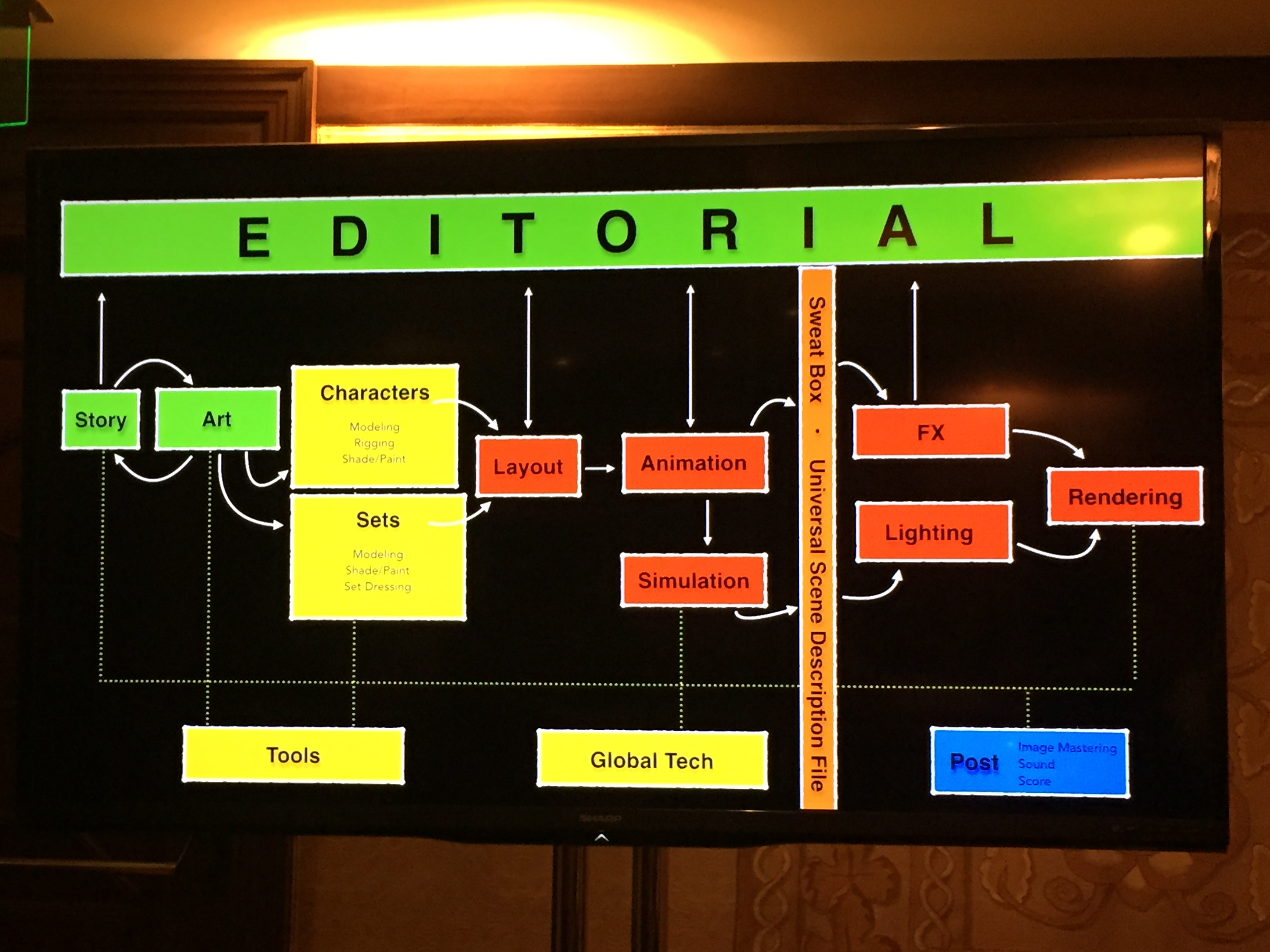
“Ideal” flow chart for Pixar

“Real” flow chart for Pixar
Sondheimer then took up the subject of the “Pixar Pipeline.” He presented an orderly flow chart that showed the logical “assembly line” that Pixar films are supposed to follow. He then shared a second graphic, labeled “Art Department Work Flow” that he joked was more the way things tended to go.
Short films, he went on to explain, allow Pixar to explore innovations in process within the framework of story and character. Because features employ so many people and require greater resources, they cannot take the kind of creative risks that short subjects allow.

